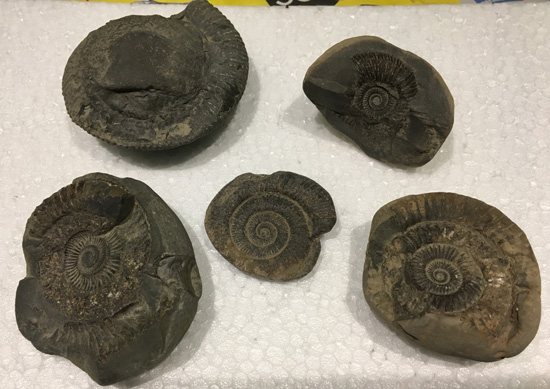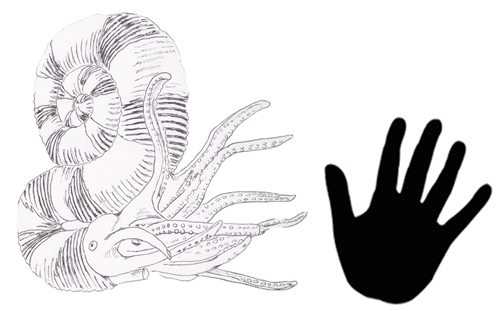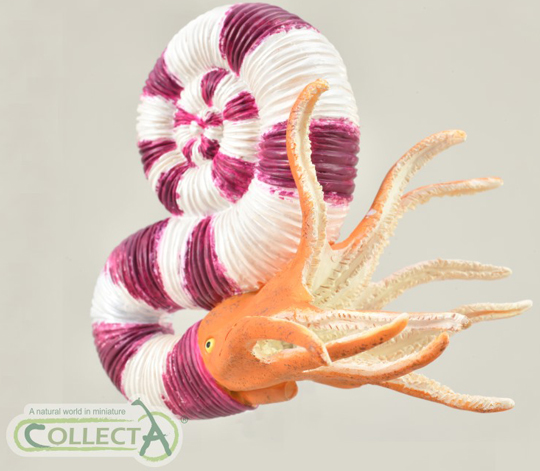Ask someone to draw an ammonite and it is very likely that they will sketch a coiled shell. Such fossils are ubiquitous and a mainstay of most people’s fossil collections. However, not all ammonites had a coiled shell, some of the members of the Order Ammonitida (more derived ammonites), especially some families that evolved during the Late Cretaceous, had very bizarre shell shapes, far removed from the tightly coiled planispiral shape that most people associate with these highly successful cephalopods.

Picture credit: Everything Dinosaur
Preparing for Pravitoceras
As team members at Everything Dinosaur prepare for the arrival of the last of the new for 2021 CollectA Age of Dinosaur models they have been busy checking over their fact sheet for Pravitoceras. The CollectA Pravitoceras is a replica of one of those ammonite genera with a very peculiar shell.
Visit the award-winning Everything Dinosaur website: Everything Dinosaur.
Heteromorphic Ammonites
The attractive Pravitoceras model increases the number of invertebrates featured in the CollectA range following the recent introduction (2020) of a horseshoe crab, a trilobite, Orthoceras, a belemnite, the nautilus (N. pompilius) and an ammonite with a regularly coiled shell (homomorph) – Pleuroceras.
Members of the public might be quite familiar with those types of ammonites with tightly coiled shells, as epitomised by the CollectA Pleuroceras (an example of a homomorph shell). In the Late Jurassic a number of new types of marine cephalopod began to appear in the fossil record with different shell morphotypes – the ammonite shell began to diverge from the standard planispiral shape. These ammonites became increasingly abundant and diverse during the Cretaceous and by the Late Cretaceous they were geographically widespread.
The heteromorphic ammonites were so abundant, that just like their coiled relatives, many genera have become important zonal fossils assisting with the relative dating of strata (biostratigraphy).

Picture credit: Everything Dinosaur
Pravitoceras – An “S-shaped” Ammonite
The final shell coil of Pravitoceras helps to form a distinctive “S” shape and the body chamber is folded back on itself to form a retroversal hook. Palaeontologists have speculated that these types of ammonites were either entirely epifaunal (dwelling on the sea floor), perhaps scavenging or hunting slow moving animals such as bivalves or snails, or they floated passively in the water column, like many types of extant jellyfish, feeding on zooplankton.
Research using wax replicas and computer models has demonstrated that no matter how complex the shell shape, these creatures would have had no trouble maintaining their buoyancy in the water column. Palaeontologists debate what role in the food web ammonites like Pravitoceras occupied. Many scientists have postulated that Pravitoceras floated passively in the water column feeding on zooplankton.
To view the range of CollectA prehistoric animal models available from Everything Dinosaur: CollectA Prehistoric Life Models.







Leave A Comment